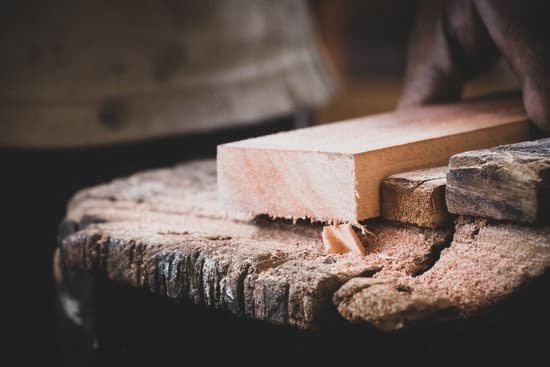A woodworking vice is an essential tool for any woodworker, as it allows for the secure clamping of wood while working on projects. Whether you are a professional craftsman or a hobbyist, installing a woodworking vice in your workshop can greatly enhance the efficiency and precision of your work. This article will guide you through the process of installing a woodworking vice, from understanding its uses to choosing the right location and properly securing it for maximum stability.
Woodworking vices come in various types, each designed for specific functions such as bench vices, quick-release vices, and shoulder vices. Understanding the different types of woodworking vices and their specific uses is crucial in selecting the right one for your workspace. Once you have chosen the appropriate type of vice, you will need to gather the necessary tools and materials for installation.
Installing a woodworking vice involves more than just screwing it onto your workbench. Proper placement and securing of the vice are essential factors that contribute to its functionality and safety. This article will provide a step-by-step guide on how to install a woodworking vice, along with tips and tricks for ensuring maximum stability.
Additionally, we will cover proper maintenance and care practices to prolong the lifespan of your woodenworking vice. By the end of this article, you will understand the importance of a well-installed woodworking vice in achieving precision and safety in woodwork projects.
Types of Woodworking Vices and Their Specific Functions
When it comes to woodworking vices, there are several types available, each with its specific functions and advantages. The most common types include the front vice, tail vice, shoulder vice, and leg vice.
The front vice is typically mounted on the front edge of the workbench and is designed for holding boards in place while planing or sawing. It is also useful for holding pieces together while gluing.
The tail vice, on the other hand, is usually installed at the end of the workbench and is ideal for securing longer pieces of wood or for edge planing. Its functionality makes it a versatile tool for various woodworking projects.
Another type of woodworking vice is the shoulder vice, which is specifically designed for holding the edges of boards firmly in place during tasks such as chiseling or routing. Finally, the leg vice is mounted on one of the legs of the workbench and is often used for securing large or heavy workpieces.
Each type of woodworking vice has its unique functions that cater to different needs in a woodworker’s shop. Choosing the right type(s) will largely depend on the kinds of projects you typically work on and your personal preferences.
| Type of Vice | Specific Function |
|---|---|
| Front Vice | Holding boards in place while planing or sawing |
| Tail Vice | Securing longer pieces of wood or edge planing |
| Shoulder Vice | Holding edges of boards firmly during chiseling or routing tasks |
| Leg Vice | Securing large or heavy workpieces |
Installing a woodworking vice can be a game-changer in terms of efficiency and precision in your woodwork projects. Each type has its own specific applications that cater to different needs. Whether you are working on fine furniture pieces or large construction projects, having a well-installed woodworking vice can greatly enhance your woodworking skills and capabilities.
Tools and Materials Needed for Installing a Woodworking Vice
When it comes to installing a woodworking vice, having the right tools and materials is crucial for a successful installation. Without the proper equipment, the process can become frustrating and may even result in an improperly installed vice. Here are some essential tools and materials needed for installing a woodworking vice.
Tools
Some of the necessary tools for installing a woodworking vice include a drill, screws or bolts, screwdrivers, wrenches, measuring tape, pencil, level, and a hammer. The drill will be used to create the necessary holes for mounting the vice securely onto a workbench or table.
The screws or bolts will be used to fasten the vice to the work surface. A level will ensure that the vice is installed straight and even, while a measuring tape and pencil will help mark out the proper placement for installation.
Materials
In addition to these tools, you will also need suitable materials such as wood screws or bolts (depending on the type of workbench), wood glue (optional), and possibly washers if not included with your vice installation kit. The quality of these materials is vital as they provide stability and durability to your woodworking vice once it’s installed.
By having all of these tools and materials ready before beginning the installation process, you can ensure that you have everything you need to successfully install your woodworking vice securely onto your work surface. With the right equipment at hand, you can proceed with confidence knowing that you are well-prepared for this important step in setting up your woodworking workshop.
Choosing the Right Location for the Vice
When it comes to installing a woodworking vice, one of the most important steps is choosing the right location for it. The location of your vice can greatly affect its functionality and your overall woodwork projects. Here are a few considerations to keep in mind when selecting the best spot for your woodworking vice.
Workbench Height
Before installing your woodworking vice, you’ll need to consider the height of your workbench. The vice should be positioned at a comfortable working height, allowing you to easily maneuver wood pieces and apply pressure when needed. A good rule of thumb is to position the top of the vice jaws at about knuckle height for maximum efficiency.
Space and Accessibility
The location of your woodworking vice should also provide ample space and accessibility for maneuvering large or awkwardly shaped workpieces. Make sure there is enough clearance around the vice to accommodate different sizes of wood pieces without hindering your movements.
Lighting and Ventilation
Lastly, consider the lighting and ventilation in the area where you plan on installing the woodworking vice. Adequate lighting will ensure precision and safety while working on wood projects, while proper ventilation will help create a comfortable and safe working environment.
By carefully considering these factors, you can choose an ideal location for installing a woodworking vice that will enhance both your safety and efficiency in your woodwork projects.
Step by Step Guide to Installing the Woodworking Vice
A woodworking vice is an essential tool for any woodworker, providing a secure grip on workpieces during various tasks such as sawing, planing, and drilling. Installing a woodworking vice in your workshop can greatly enhance the precision and safety of your woodwork projects. Whether you’re a beginner or experienced woodworker, knowing how to properly install a woodworking vice is crucial for maximizing its functionality.
To install a woodworking vice, you will need the following tools and materials:
- Woodworking vice
- Workbench
- Drill
- Screws
- Screwdriver
- Pencil
- Measuring tape
Once you have gathered the necessary tools and materials, it’s important to choose the right location for the vice on your workbench. The ideal location should be based on your specific woodworking needs and the size of your workbench. Consider factors such as accessibility, height, and orientation that will allow for comfortable use of the vice during different woodworking tasks.
Here is a step-by-step guide to installing a woodworking vice:
- Measure and mark the desired location for the vice on your workbench using a pencil.
- Position the vice on the marked area and trace around its base with a pencil to outline where it will be installed.
- Using a drill, create pilot holes within the outlined area on your workbench.
- Place the woodworking vice back onto the marked area and align it with the pilot holes.
- Securely fasten the vice to your workbench using screws and a screwdriver.
Following these steps will ensure that your woodworking vice is securely installed and ready for use in your woodwork projects. Proper installation is key to maximizing stability and functionality when using your woodworking vice.
Tips and Tricks for Securing the Vice for Maximum Stability
Securing a woodworking vice for maximum stability is crucial in ensuring the safety and accuracy of your woodwork projects. Whether you are a beginner or an experienced woodworker, it is essential to follow some tips and tricks to properly secure your vice.
One important tip for securing the vice for maximum stability is to use the right type of fasteners. Make sure to use strong and durable screws or bolts to attach the vice to your workbench or table. Additionally, using washers can help distribute the load and prevent the fasteners from loosening over time.
Another key factor in securing the woodworking vice is to position it correctly on your workbench. Placing the vice at the edge of the workbench will provide better support and prevent any wobbling while working on your projects. It is also recommended to add additional support underneath the workbench where the vice will be mounted for added stability.
Furthermore, adding a wooden jaw face to your woodworking vice can improve its grip and stability when clamping down on wood pieces. The wooden jaw face can be easily replaced if damaged and provides a softer surface that won’t damage your wood projects.
In addition, regularly checking and maintaining the tightness of the vice’s components is crucial for maximum stability. Over time, screws may loosen, and parts may wear out, so consistently inspecting and tightening these elements will ensure that your woodworking vice remains stable and safe to use.
| Tip for Maximum Stability | Explanation |
|---|---|
| Use the right type of fasteners | Strong screws or bolts with washers can prevent loosening over time |
| Positioning on workbench | Placing at edge of bench with additional support underneath increases stability |
| Add a wooden jaw face | Improves grip and provides a softer surface for clamping wood pieces |
Proper Maintenance and Care for Your Woodworking Vice
After installing a woodworking vice, it is essential to maintain and care for it properly to ensure its longevity and functionality. Here are some tips and tricks for maintaining your woodworking vice:
1. Keep the vice clean: Regularly remove any dust, debris, or wood shavings from the vice to prevent any buildup that could affect its performance. Use a brush or vacuum to clean out the inside of the vice as well as the moving parts.
2. Lubricate moving parts: Apply lubricant to the screw threads and other moving parts of the woodworking vice to keep it operating smoothly. Be sure to use a lubricant that is suitable for woodworking tools and equipment.
3. Check for wear and tear: Periodically inspect the vice for any signs of wear or damage such as rust, cracks, or bent components. Address any issues immediately to prevent further damage and maintain the vice’s effectiveness.
4. Store properly: When not in use, store the woodworking vice in a dry and cool place to prevent rusting or corrosion. It is also advisable to cover the vice with a cloth or protective cover when not in use.
By following these maintenance practices, you can ensure that your woodworking vice remains in optimal condition, allowing you to continue using it effectively for your woodwork projects.
It is important to remember that proper maintenance of your woodworking vice is crucial not only for its longevity but also for ensuring safety during your woodwork projects. Regular maintenance will help prevent accidents caused by malfunctioning equipment and result in precision and accuracy while working with wood.
Importance of a Well-Installed Woodworking Vice for Precision and Safety in Woodwork Projects
A woodworking vice is a crucial tool for any woodworker, as it provides a secure grip on the workpiece, allowing for precision and safety during various woodworking processes. Whether you are cutting, drilling, sanding, or carving, a woodworking vice holds your workpiece firmly in place, giving you the confidence to work with accuracy and efficiency. Additionally, it frees up both hands to operate tools, reducing the risk of accidents and ensuring a smooth workflow.
There are different types of woodworking vices available, each designed for specific functions. For instance, a front vice is typically used for clamping work at the front of the workbench, while a tail vice is useful for holding longer pieces horizontally. Understanding the specific functions of each type of vice is crucial in choosing the right one for your woodworking needs.
Installing a woodworking vice requires some essential tools and materials. You will need a drill, wooden jaw liners (if not included), screws or bolts suitable for securing the vice, and possibly some shims to ensure that the vice is level if your workbench isn’t perfectly flat. Before you start installing the vice, make sure to have all these items on hand to avoid any interruptions during the process.
Conclusion
In conclusion, a woodworking vice is an essential tool for any woodworker, as it provides the necessary stability and support needed to work on various wood projects. Whether you are a beginner or an experienced woodworker, having a properly installed woodworking vice can significantly enhance your woodworking skills and projects.
By choosing the right type of woodworking vice and carefully selecting its location in your workshop, you can ensure that it meets your specific needs and provides maximum stability. Additionally, following a step-by-step guide for installation, along with proper maintenance and care, will contribute to the longevity and efficiency of your woodworking vice.
A well-installed woodworking vice not only improves precision and safety in woodwork projects but also opens up new possibilities for craftsmanship. Whether you are working on small scale or large scale projects, having a reliable vice can make all the difference in the quality of your work. So, take the time to install your woodworking vice properly, and enjoy the enhanced woodworking experience it brings to your craft.
Frequently Asked Questions
How Do You Mount a Woodworking Vise?
Mounting a woodworking vise involves attaching it securely to the workbench using bolts and screws. It’s important to position it in a way that allows for easy access and efficient clamping of the workpiece.
What Is the Best Position for a Woodworking Vise?
The best position for a woodworking vise is typically on the front edge of the workbench, allowing for optimal clamping and maneuverability. It should be mounted at a height that is comfortable for the user and offers good stability.
How Do I Fix My Vice to Workbench?
To fix a vice to a workbench, you will need to mark and drill holes in the workbench surface, then attach the vice using appropriate bolts or screws. Ensuring that it is securely fastened will prevent any wobbling or instability during use.

Hi everyone! I’m a woodworker and blogger, and this is my woodworking blog. In my blog, I share tips and tricks for woodworkers of all skill levels, as well as project ideas that you can try yourself.





